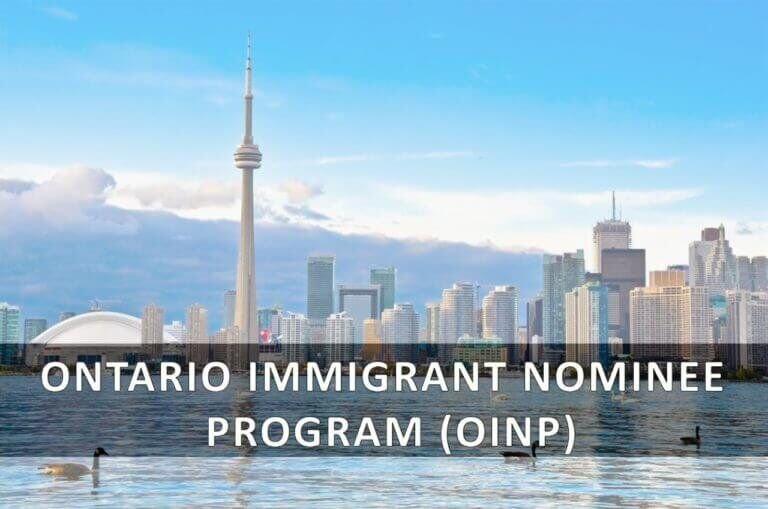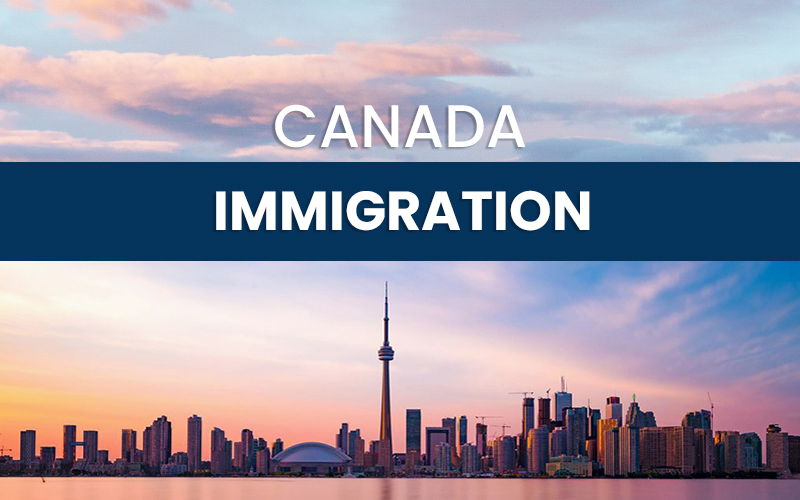
- January 12, 2023
- Admin
- 0
Table of Contents
ToggleOverview
The Canadian Federal Skilled Trade Program is an immigration program designed to attract skilled trades workers to Canada. It is part of the Express Entry system, an online system used to manage immigration applications. The program aims to address labour shortages in certain skilled trades occupations in Canada and support economic growth. The program seeks to fill gaps in the Canadian labour market and improve the country’s competitiveness by bringing in skilled trades workers.
There are several advantages to the Federal Skilled Trade Program. Firstly, it offers a pathway to permanent residency in Canada, which can lead to Canadian citizenship. This means successful applicants can enjoy the benefits of living and working in Canada, including access to public services and social programs.
Secondly, the program is designed to be fast and efficient, with six months or fewer processing times. This means successful applicants can begin their new life in Canada relatively quickly.
Finally, the program offers settlement and integration support to newcomers, including language and skills training, employment support, and community services. This can help newcomers to adapt to life in Canada and to integrate into Canadian society.
Eligibility Criteria
The Canadian Federal Skilled Trade Program has specific eligibility criteria that applicants must meet to be considered for permanent residency. The eligibility requirements are as follows:
Age Limit: Applicants must be between 18 and 47 years of age at the time of application.
Education and Work Experience Requirements
Applicants must have at least two years of full-time work experience in a skilled trade occupation within the past five years. The work experience must be in an eligible skilled trade occupation, as defined by the National Occupational Classification (NOC) system. In addition, applicants must have a high school diploma or an equivalent qualification.
Language Proficiency
Applicants must meet the minimum language proficiency requirements in either English or French. This includes reading, writing, speaking, and understanding the language. Language proficiency is measured by taking an approved language test, such as the International English Language Testing System (IELTS) or the Canadian English Language Proficiency Index Program (CELPIP).
Job Offer or Certificate of Qualification
Applicants must have a valid job offer from a Canadian employer or a Certificate of Qualification (CQ) from a Canadian province or territory. The job offer must be in an eligible skilled trade occupation for at least one year. The CQ must be issued by a provincial or territorial authority in Canada and must show that the applicant meets the standards for the professional trade occupation in that province or territory.
Other Eligibility Requirements
Applicants must also meet other eligibility requirements, such as passing a medical exam and obtaining a police certificate. They must also show that they have enough money to support themselves and their dependents when they arrive in Canada.
It is important to note that meeting the eligibility criteria does not guarantee acceptance into the program. Applicants must also meet the selection criteria and compete with other applicants for a limited number of spots. Therefore, ensuring that all eligibility requirements are met and the application is complete and accurate is essential.
Application Process
The application process for the Canadian Federal Skilled Trade Program is as follows:
Step 1: Determine Eligibility
Before applying, applicants should ensure that they meet all eligibility criteria for the program, including language proficiency, education and work experience requirements, and having a valid job offer or Certificate of Qualification.
Step 2: Submit Express Entry Profile
Applicants must submit an Express Entry profile online, which includes personal information, language proficiency test results, education and work experience details, and other relevant information.
Step 3: Receive the Invitation to Apply
Suppose the applicant meets the eligibility criteria and has a high enough score based on the Comprehensive Ranking System (CRS). In that case, they will receive an Invitation to Apply (ITA) for permanent residency.
Step 4: Submit an Application for Permanent Residency
Once an ITA is received, the applicant must submit a complete application for permanent residency within 60 days. This includes providing all required documents, such as language test results, educational credentials, and work experience letters. The applicant must also pay the processing fees at this stage.
Step 5: Medical and Security Checks
After applying, the applicant must undergo a medical examination and provide a police certificate to show they have no criminal record.
Step 6: Receive Final Decision Once all requirements have been met and the application has been processed, the applicant will receive a final decision on their application. The processing time for the Federal Skilled Trade Program is generally six months or less.
Required Documents:
- Passport or travel document
- Language test results
- Educational credentials
- Work experience letters
- Job offer or Certificate of Qualification
- Police certificate
- Medical exam results
Processing Fees:
The Federal Skilled Trade Program processing fees include an application fee and a right of permanent residence fee. The application fee is CAD 1,325 per person, while the right of permanent residence fee is CAD 500 per person.
Timelines for Application Processing: The processing time for the Federal Skilled Trade Program is generally six months or less. However, processing times can vary depending on factors such as the volume of applications received, the application’s completeness, and the case’s complexity.
It is important to note that meeting the eligibility criteria does not guarantee acceptance into the program. Applicants may have to wait longer for a final decision if they are selected for additional screening or verification.
Selection Factors
The Canadian Federal Skilled Trade Program uses a Comprehensive Ranking System (CRS) to assess and rank potential candidates based on various selection factors. These factors include:
- Age: Candidates between 18 and 47 can earn up to a maximum of 12 points.
- Language Proficiency: Candidates can earn up to 24 points based on their proficiency in English or French. Points are awarded for speaking, listening, reading, and writing skills.
- Education: Candidates can earn up to 25 points for their education, depending on the level of education attained and the number of years of full-time study.
- Work Experience: Candidates can earn up to 40 points for their work experience in a skilled trade occupation.
- Job Offer: Candidates can earn up to 10 points for a valid job offer from a Canadian employer.
- Adaptability: Candidates can earn up to 10 points for their adaptability, which includes factors such as previous work or study in Canada, a spouse or common-law partner with language proficiency or Canadian work experience, and relatives living in Canada.
The maximum total score that a candidate can achieve is 100 points.
Express Entry System:
The Federal Skilled Trade Program is a part of the Express Entry system, an online application management system that manages applications for permanent residency under the following economic programs: Federal Skilled Worker Program, Federal Skilled Trade Program, and Canadian Experience Class.
Points Allocation:
Once a candidate’s profile is submitted, they are given a score based on the CRS. The highest-scoring candidates are then invited to apply for permanent residency. In addition, the Canadian government conducts regular draws from the pool of candidates, inviting those with the highest scores to apply for permanent residence.
The minimum CRS score required to receive an Invitation to Apply (ITA) varies from draw to draw and depends on the number of candidates in the pool and the number of ITAs being issued.
In conclusion, the selection factors and the Comprehensive Ranking System are essential Canadian Federal Skilled Trade Program components. By assessing candidates based on these factors, the Canadian government can select candidates with the potential to succeed in Canada and positively contribute to the Canadian economy.
The Canadian Federal Skilled Trade Program is designed to facilitate the immigration of skilled trade workers with experience in specific occupations. The following are the eligible job categories under the program:
Major Group 72: Industrial, electrical and construction trades
- Electricians
- Plumbers
- Welders
- Industrial mechanics
- Heavy-duty equipment mechanics
- Carpentry trades
- Construction trades
2. Major Group 73: Maintenance and equipment operation trades
- Machinery mechanics
- Machine fitters
- Tool and die, makers
- Heavy equipment operators
Major Group 82: Supervisors and technical jobs in natural resources, agriculture and related production
- Supervisors in mining, oil and gas
- Supervisors in forestry
- Supervisors in agriculture
Major Group 92: Processing, manufacturing, and utility supervisors and central control operators
- Supervisors in manufacturing
- Supervisors in processing and utilities
National Occupational Classification (NOC)
The Canadian government uses the National Occupational Classification (NOC) system to classify and organize job categories in Canada. The NOC system assigns a unique code to each job category, which is used to determine eligibility for immigration programs, including the Federal Skilled Trade Program. Each eligible job category under the program has a specific NOC code.
Skill Level and Type
In addition to the eligible job categories, applicants must also meet the program’s skill level and type requirements. The eligible occupations under the program are considered skilled trades, requiring specific skills and knowledge gained through formal apprenticeship training, on-the-job training, or other related training programs. The eligible occupations must also fall under one of the following skill levels under the NOC system:
- Skill Level B: Occupations that require a college diploma or apprenticeship training
- Skill Level C: Occupations that require on-the-job training or vocational training
- Skill Level D: Occupations that require on-the-job training and some secondary school education
In conclusion, understanding the eligible job categories, the National Occupational Classification system, and the skill level and type requirements is crucial for applicants interested in the Canadian Federal Skilled Trade Program. By meeting these requirements, applicants can increase their chances of being selected for permanent residency and starting a new life in Canada.
Settlement and Integration Support
Moving to a new country can be challenging, but the Canadian government offers various resources and support programs to help immigrants settle and integrate into Canadian society. The following are some of the resources and support available under the Canadian Federal Skilled Trade Program:
Language and Skills Training:
Language skills are critical to success in Canada. The Canadian government offers language training programs to help immigrants improve their English or French language skills.
These programs are available for free or at a minimal cost through various language training centers across Canada. In addition, the government offers skills training programs to help immigrants enhance their skills and knowledge in their chosen trade or profession.
Employment Support
Finding employment in Canada can be challenging for newcomers. To help immigrants find work, the government offers various employment support services, including job search workshops, resume writing and interview preparation, and job placement services. Job fairs and online job boards are also available to help immigrants find suitable employment opportunities.
Settlement Services:
The government provides settlement services to help newcomers settle into Canadian society. These services include assistance with finding suitable housing, opening a bank account, getting a social insurance number, enrolling in health care, and registering children for school.
In addition, various community services are available, including community centers, libraries, and recreation centers that offer programs and services to help immigrants integrate into their local communities.
Social and Cultural Support:
The Canadian government also offers social and cultural support programs to help immigrants adjust to life in Canada. These programs include social events, cultural activities, and volunteer opportunities to help immigrants connect with their local communities and build new friendships.
Provincial Nominee Programs (PNPs)
Provincial Nominee Programs (PNPs) are another pathway for skilled trade workers to immigrate to Canada. PNPs are managed by individual Canadian provinces and territories and are designed to meet each province or territory’s specific economic and labour market needs. The following are some of the PNPs that accept skilled trade workers:
- Ontario Immigrant Nominee Program (OINP) Skilled Trades Stream
- Saskatchewan Immigrant Nominee Program (SINP) Skilled Worker Category
- Nova Scotia Nominee Program (NSNP) Skilled Worker Stream
- British Columbia Provincial Nominee Program (BCPNP) Skills Immigration Category
- Manitoba Provincial Nominee Program (MPNP) Skilled Worker in Manitoba Stream
Comparison to Federal Skilled Trade Program
While the Federal Skilled Trade Program and PNPs offer pathways for skilled trade workers to immigrate to Canada, the two programs have some critical differences. The Canadian government manages the Federal Skilled Trade Program, while individual provinces and territories manage PNPs.
The Federal Skilled Trade Program has standardized selection criteria and a point system, while PNPs may have different standards and selection processes depending on the province or territory. Additionally, the Federal Skilled Trade Program has a set quota for the number of applications it will accept each year. In contrast, PNPs may receive more applicants depending on the needs of the province or territory.
Advantages and Disadvantages
The advantages of PNPs include targeting specific labour market needs and economic priorities of individual provinces and territories, which may offer more employment opportunities and a higher likelihood of success for skilled trade workers. PNPs may provide additional support and services for immigrants, such as settlement and integration support, job placement services, and language training programs.
However, the disadvantages of PNPs include the potential for differences in selection criteria and processes between provinces and territories, which may make it more challenging for applicants to navigate the system. Additionally, PNPs may have higher application fees and longer processing times than the Federal Skilled Trade Program.
Conclusion
The Canadian Federal Skilled Trade Program is an immigration program designed to attract skilled trade workers to Canada. The program offers a pathway for skilled trade workers to immigrate to Canada, gain permanent residency, and eventually citizenship. Some potential benefits of the program include the ability to work and live in Canada, access to free healthcare and education, and the opportunity to become a Canadian citizen.
To apply for the Federal Skilled Trade Program, prospective applicants must meet the eligibility requirements, including having a job offer or certificate of qualification in a skilled trade, meeting the language proficiency requirements, and passing a medical examination and security clearance. Applicants must also submit an online application and the required documents, pay the application fee, and wait for the application to be processed.
For skilled trade workers interested in immigrating to Canada, the Federal Skilled Trade Program may be a viable option. The program offers a clear pathway to permanent residency and citizenship and provides access to various settlement and integration support programs to help immigrants settle into Canadian society.























